Attached files
| file | filename |
|---|---|
| 8-K - FORM 8-K - Noranda Aluminum Holding CORP | d8k.htm |
| EX-99.1 - PRESS RELEASE - Noranda Aluminum Holding CORP | dex991.htm |
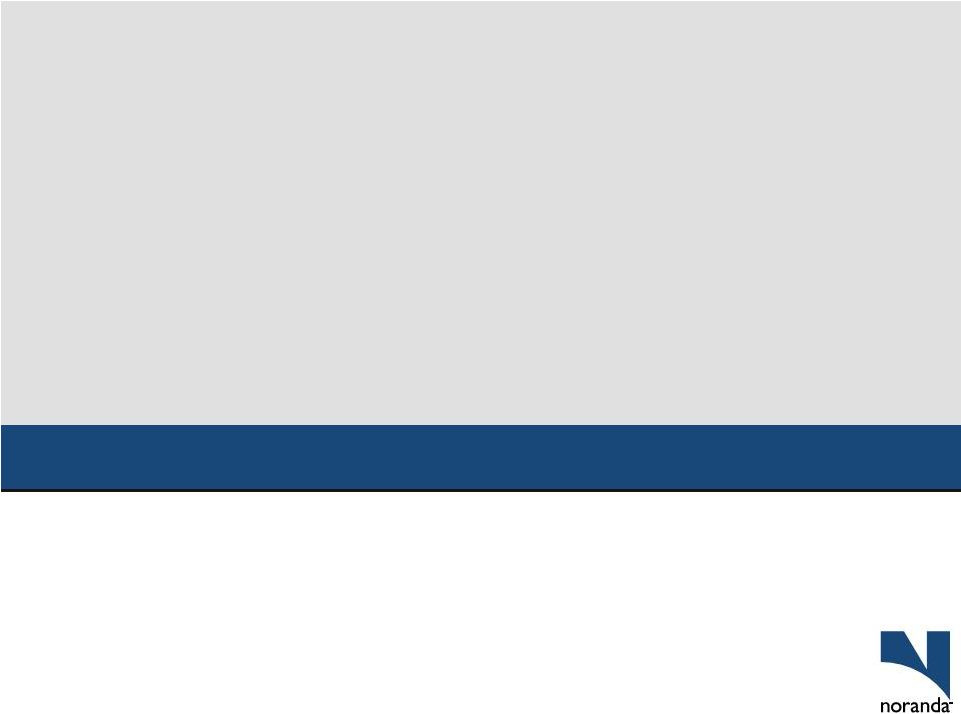 Noranda Aluminum
Holding Corp July 27, 2011
10:00 AM Eastern / 9:00 AM Central
Exhibit 99.2
SECOND QUARTER RESULTS CONFERENCE CALL |
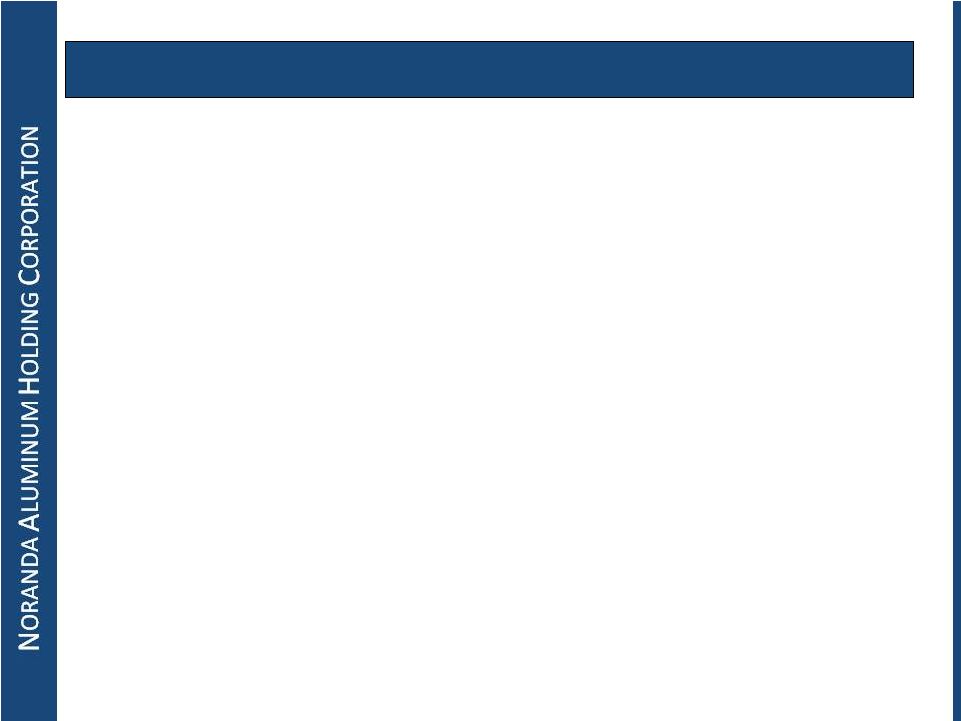 The following
information contains, or may be deemed to contain, "forward-
looking statements" (as defined in the U.S. Private Securities Litigation Reform Act
of 1995). By their nature, forward-looking statements involve risks and
uncertainties because they relate to events and depend on circumstances that
may or may not occur in the future. The future results of Noranda may vary from
the results expressed in, or implied by, the following forward-looking statements,
possibly to a material degree. For a discussion of some of the important factors
that could cause Noranda’s results to differ from those expressed in, or implied by,
the following forward-looking statements, please refer to Noranda’s filings
with the SEC, including the Annual Report on Form 10-K.
Forward Looking Statements
2 |
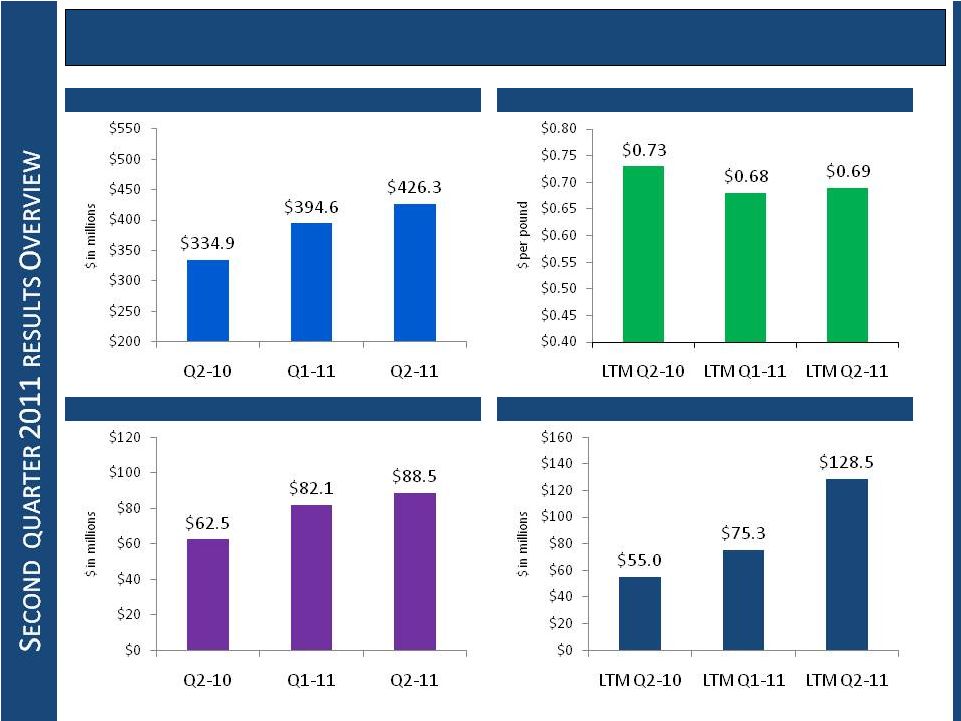 Revenue (3
months ended) Segment Profit (3 months ended)
LTM Integrated Primary Aluminum Net Cash Cost
LTM Operating Cash Flow, excluding aluminum hedges
3
Sequential and Year-Over-Year Improvements in Revenues, Profitability and
Liquidity |
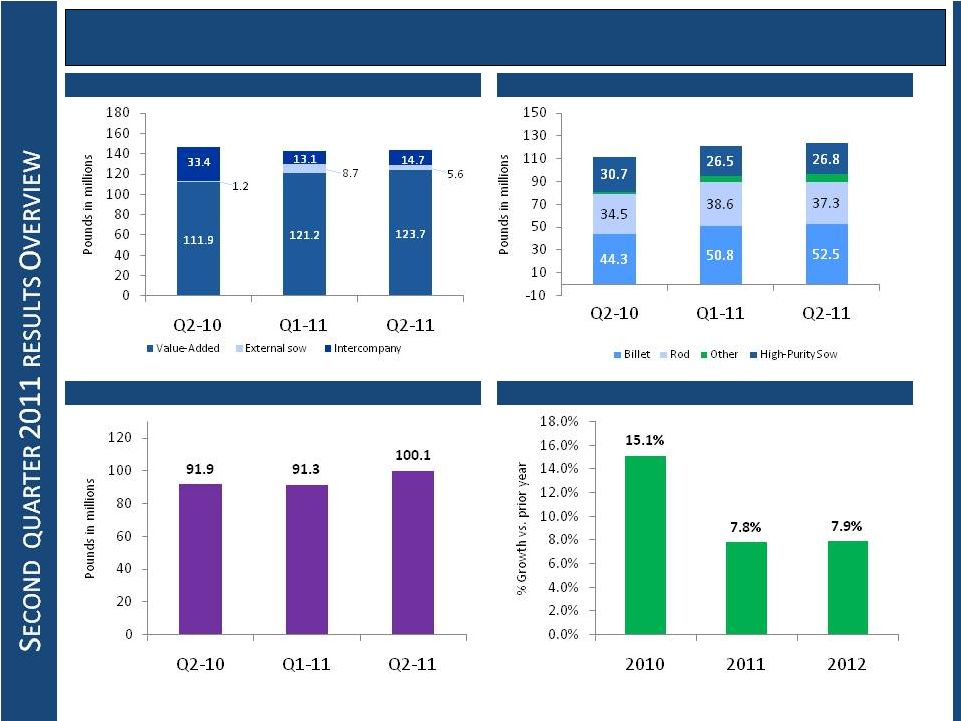 Primary Aluminum
Product Shipments (Total, 3 months ended) Primary Value-Added Volume by Category (3
months ended) U.S. Aluminum Consumption Growth Rates (CRU)
4
Continued Growth for Value-Added Products
Flat Rolled Product Shipments (3 months ended)
111.9
121.2
123.7
146.5
143.0
144.0 |
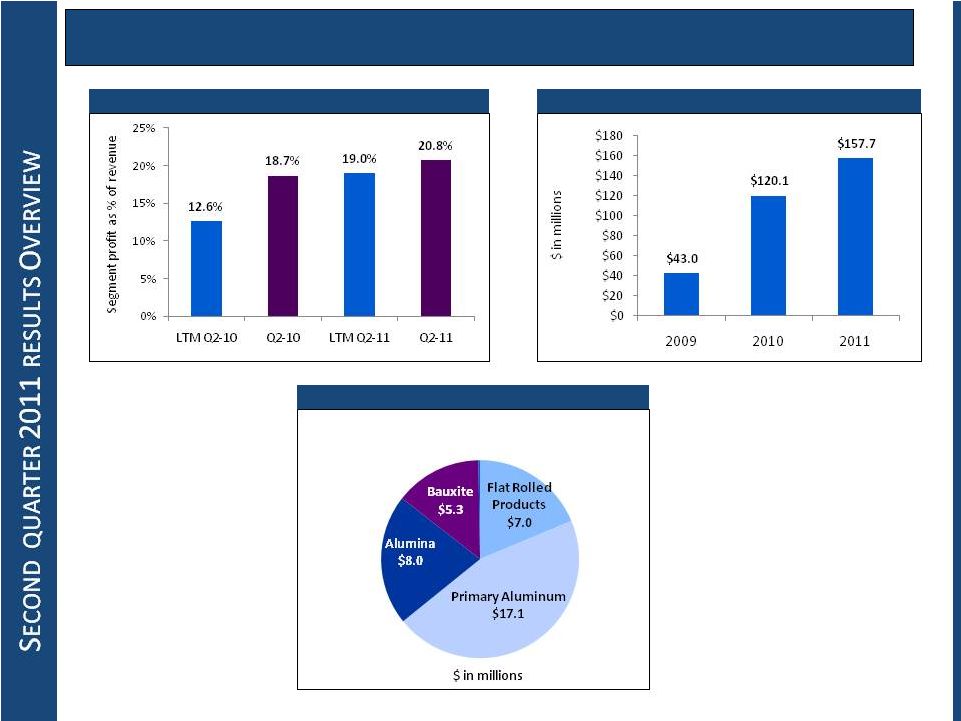 Cumulative CORE
Savings through Q2-11 Year to Date Q2-11 CORE Savings by Segment
5
Productivity Complements Growth in Creating Value
Segment Profit Margin |
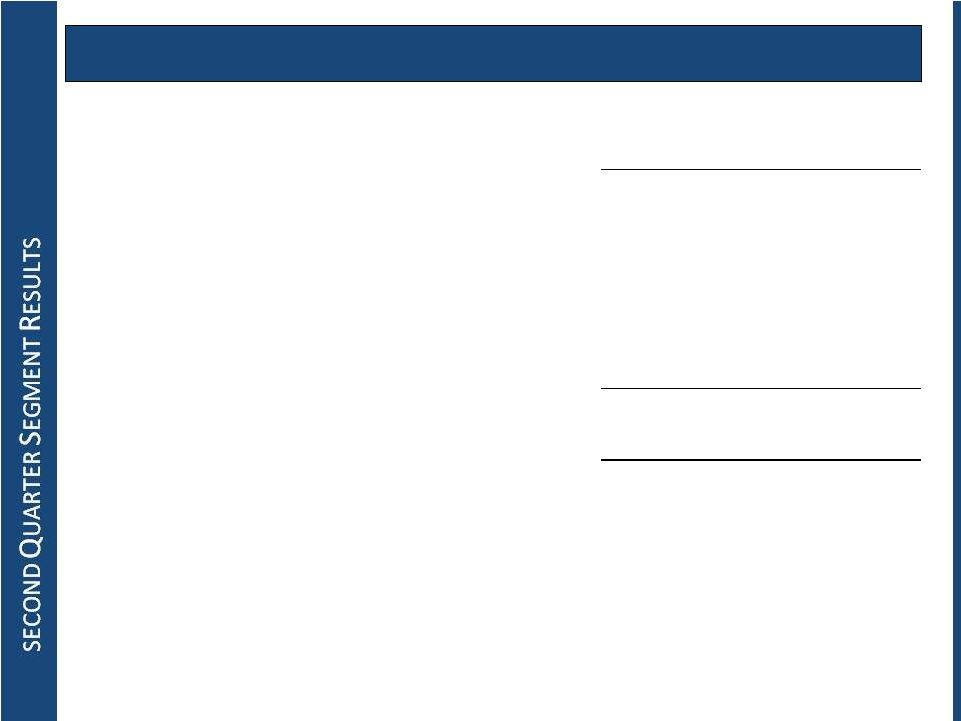 6
Improved Segment Profit Performance
Q2-10
Q1-11
Q2-11
Integrated Upstream Segment Profit
$55.2
$75.2
$79.5
Flat Rolled Products Segment Profit
14.6
13.5
16.2
Corporate Costs
(7.3)
(6.6)
(7.2)
Total Segment Profit
$62.5
$82.1
$88.5 |
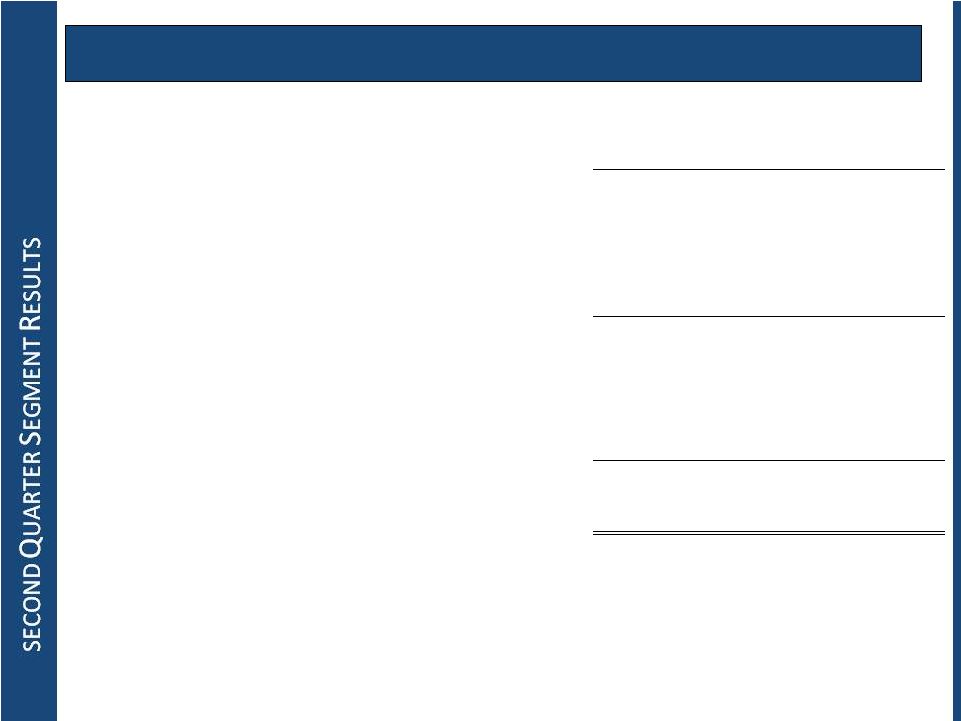 7
Continued Growth in Upstream Profitability
Q2-10
Q1-11
Q2-11
Realized Midwest Transaction Price
$
1.04
$
1.18
$ 1.26
Net integrated cash cost of primary aluminum
0.66
0.66
0.70
Integrated upstream margin per pound
$ 0.38
$
0.52
$ 0.56
Total primary aluminum shipments
146.5
143.0
144.0
Integrated upstream segment profit
$ 55.2
$
75.2
$ 79.5 |
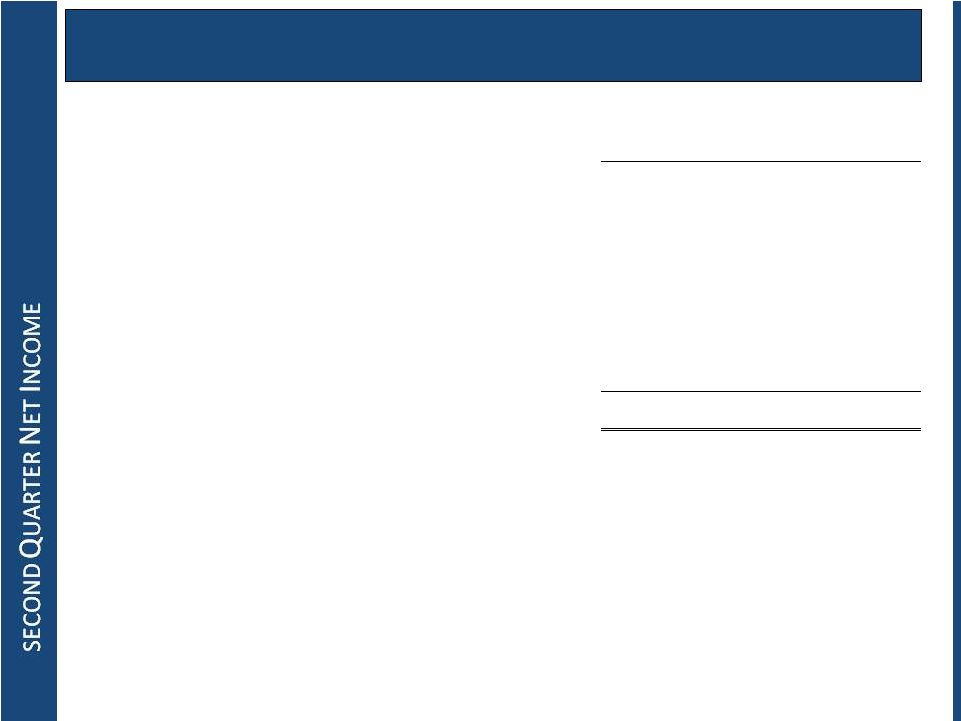 8
Bridge of Segment Profit to Net Income, Excluding Special Items
Q2-10
Q2-11
Q2-11
Segment profit
$
62.5
$
82.1
$ 88.5
Depreciation and amortization
(25.1)
(23.6)
(24.5)
LIFO/LCM
(9.6)
(10.2)
(9.0)
Interest expense, net
(8.6)
(5.7)
(5.5)
Other recurring non-cash
(3.0)
(6.9)
(2.4)
Income tax impact of special items
(5.3)
(11.9)
(15.9)
Net income, excluding special items
$ 10.9
$
23.8
$ 31.2 |
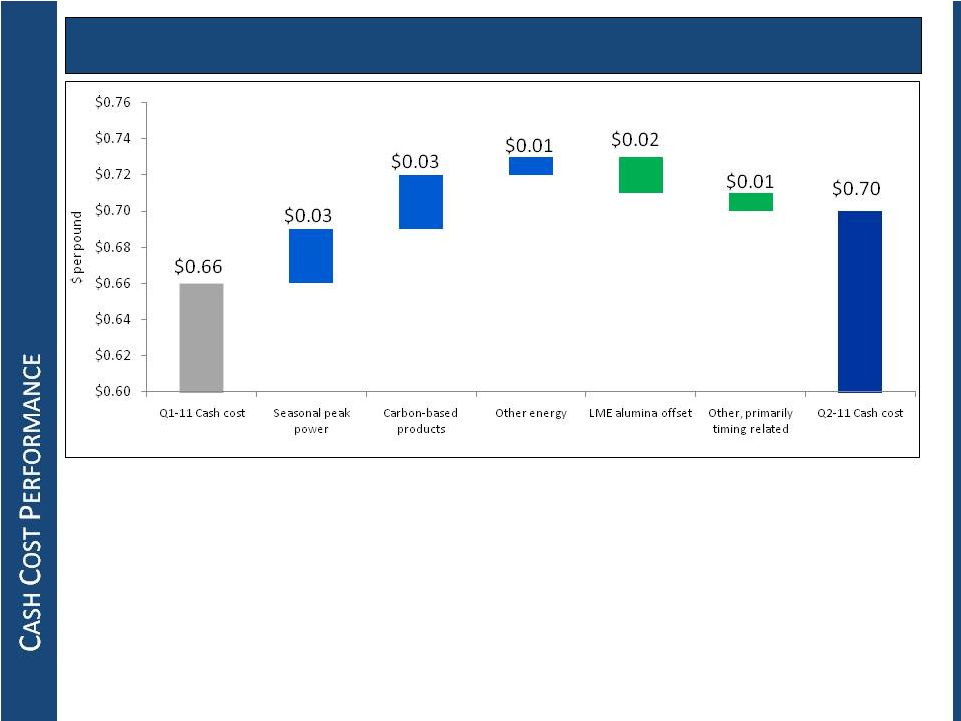 9
Cash Costs Stable Despite Upward Pressures
•
Third Quarter Outlook Compared to Second Quarter
o
Chemical
costs
–
flat
to
1
cent
increase
o
Carbon-based
products
–
1
to
2
cent
increase
o
Recurring
impact
of
5.2%
increase
in
power
–
1
cent
increase
o
Peak
power
surcharge,
including
impact
of
5.2%
rate
increase
–
9
cent
increase
o
Turnaround
of
Q2
maintenance
timing
–
1
cent
increase |
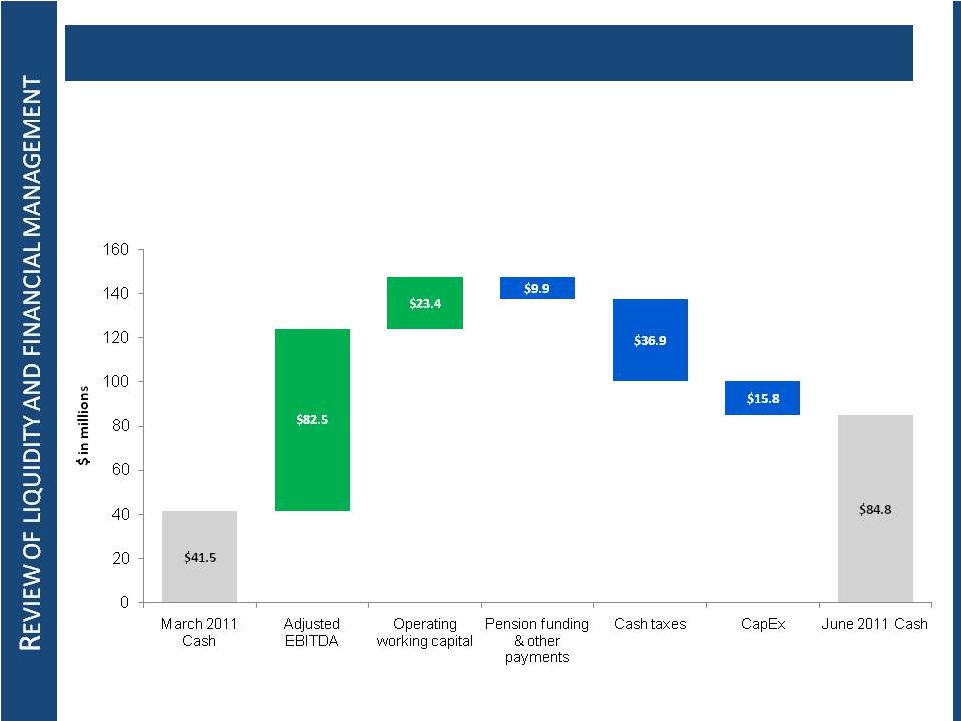 Q2-11
Liquidity and Capitalization Highlights •
$215.2
million of available borrowing
capacity under revolving credit facility
•
S&P upgraded debt ratings in Q2
•
Net debt (debt minus cash)—$343.7 million
•
Net debt to trailing twelve month Adjusted
EBITDA ratio—1.3
to
1
10 |
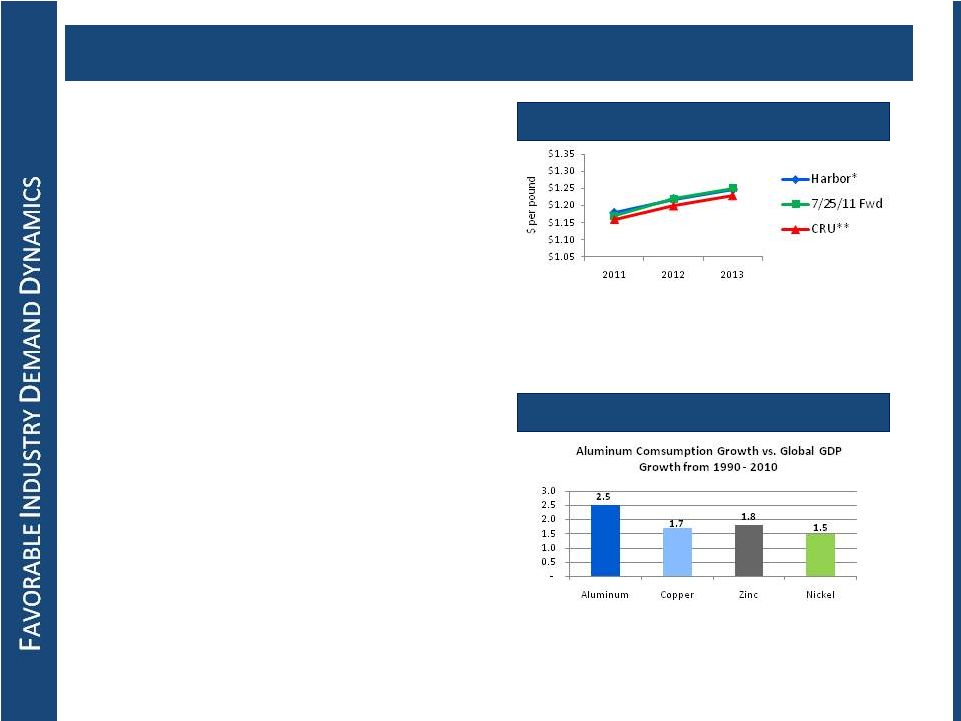 •
Global aluminum demand is expected to
continue to grow
o
Global economic growth
o
Higher standards of living and increased
demand from emerging markets
o
CRU: 2011 to see 8% growth in U.S.
primary aluminum consumption
•
Substitution from other metals such as
copper
o
Gains are occurring in wire and cable and
bus-bars, heat transfer applications,
commercial heat exchanger applications
•
Aluminum is highly correlated with
o
GDP growth
o
Rapid urbanization
o
Increasing environmental consciousness
11
We Hold a Positive Outlook For Aluminum
Beta to Global GDP
Source: CRU
* Source: Harbor Intelligence; 5 Al analysts most accurate from 2001 through 2010,
as of July 5, 2011.
** Source: CRU Aluminum Quarterly, as of July 26, 2011.
Forecasts of Average Annual LME |
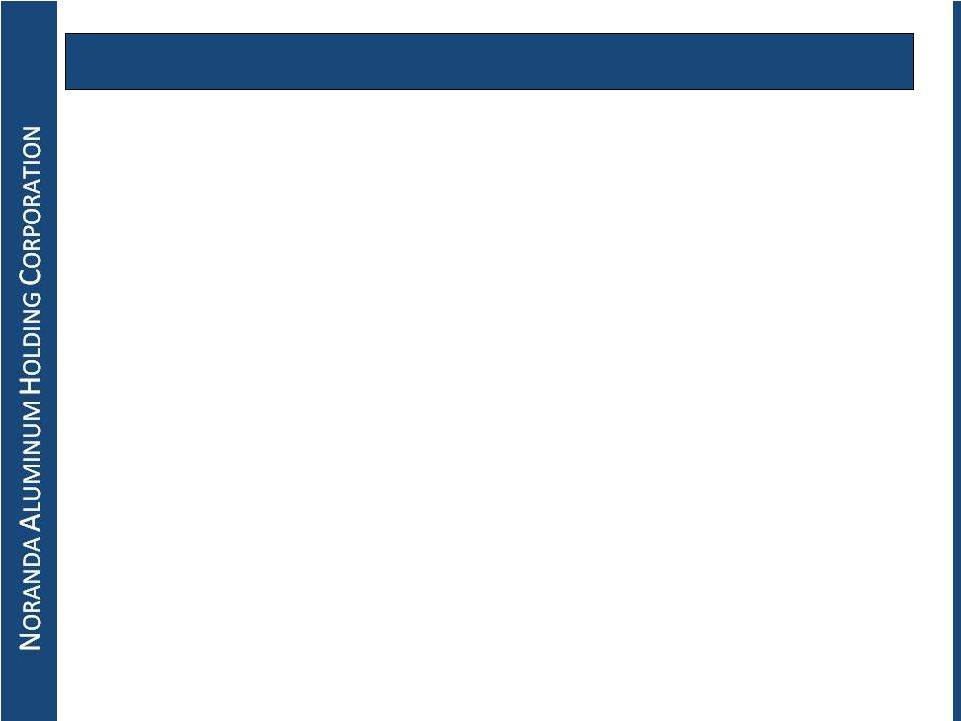 •
Achieved sequential and year-over-year growth in:
o
Revenue
o
Profitability
o
Liquidity
•
Continued to validate our strategy and business model
o
Integration & cost discipline
o
Input cost independence from LME
o
Focus on productivity and growth
o
Continued process improvements
•
Announced new three year $140 million CORE savings target
•
Expanded financial flexibility to support prudent investments
Key Second Quarter Takeaways
12 |
 Appendices |
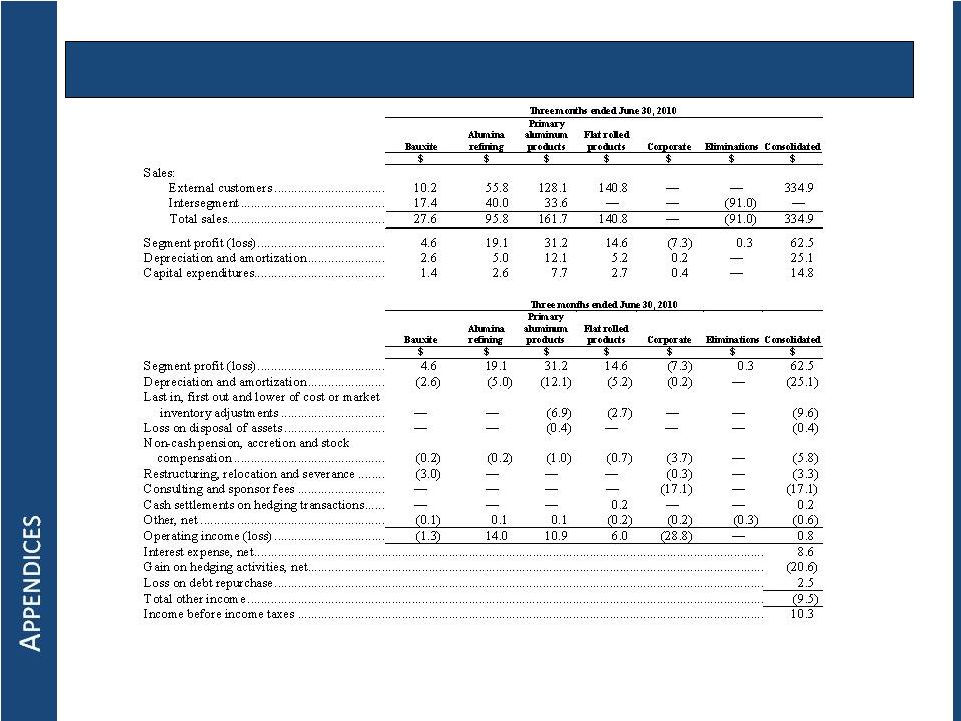 Second Quarter
2010 Segment Profit (Loss) 14 |
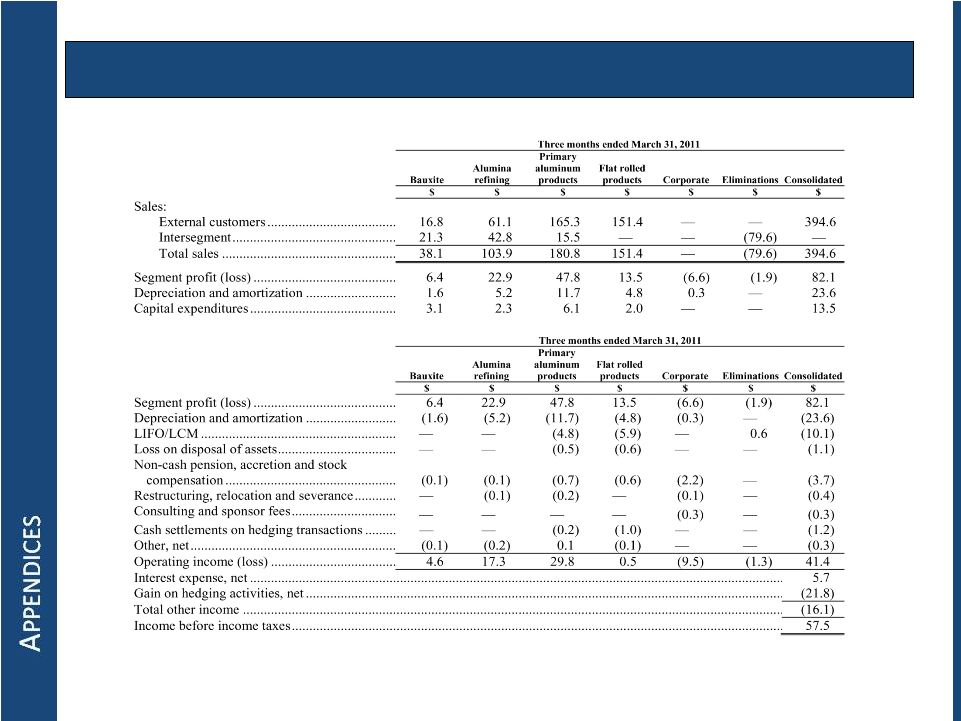 First Quarter
2011 Segment Profit (Loss) 15 |
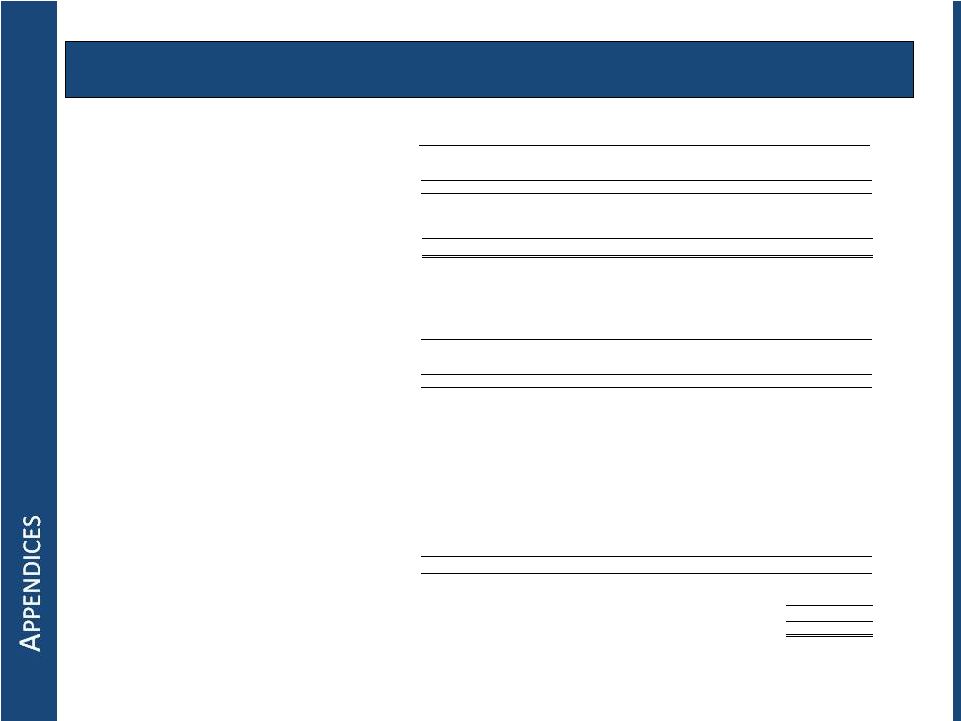 Second Quarter
2011 Segment Profit (Loss) Three months ended June 30, 2011
Bauxite
Alumina
refining
Primary
aluminum
products
Flat rolled
products
Corporate
Eliminations
Consolidated
$
$
$
$
$
$
$
Sales:
External customers
................................
17.8
60.5
174.
3
173.7
—
—
426.3
Intersegment
...........................................
18.6
48.7
18.3
—
—
(85.6)
—
Total sales
...............................................
36.4
109.2
192.6
173.7
—
(85.6)
426.
3
Segment profit (loss)
.....................................
6.0
27.6
48.0
16.2
(7.2)
(2.1)
88.5
Depreciation and amortization
.....................
2.8
5.2
11.6
4.6
0.3
—
24.5
Capital expenditures
......................................
2.3
3.0
6.1
3.7
0.7
—
15.8
Three months ended June 30, 2011
Bauxite
Alumina
refining
Primary
aluminum
products
Flat rolled
products
Corporate
Eliminations
Consolidated
$
$
$
$
$
$
$
Segment profit (loss)
.......................................
6.0
27.6
48.0
16.2
(7.2)
(2.1)
88.5
Depreciation and amortization
.......................
(2.8)
(5.2)
(11.6)
(4.6)
(0.3)
—
(24.5)
Last in, first out and lower of
cost or market
inventory adjustments
................................
—
—
(3.6)
(2.4)
—
(3.0)
(9.0)
(Gain) loss on disposal of assets
....................
0.7
—
(0.7)
(0.4)
—
—
(0.4)
Non-cash pension, accretion and stock
compensation
..............................................
(0.2)
(0.2)
(0.7)
(0.6)
(1.
6)
—
(3.3)
Restructuring, relocation and severance
.......
—
(0.1)
—
(0.1)
—
—
(0.2)
Consulting and sponsor fees
.........................
—
—
—
—
(0.1)
—
(0.1)
Cash settlements on hedging transactions......
—
—
(0.2)
(1.4)
—
—
(1.6)
Other, net
........................................................
0.1
—
(0.
3)
0.1
(0.2)
3.5
3.2
Operating income (loss)
................................
3.8
22.1
30.9
6.8
(9.4)
(1.6)
52.6
Interest expense, net
..........................................................................................................................................................
5.5
Gain
on hedging activities, net
...........................................................................................................................................
(24.3)
Total other income
.............................................................................................................................................................
(18.8)
Income before income taxes
..............................................................................................................................................
71.4
16 |
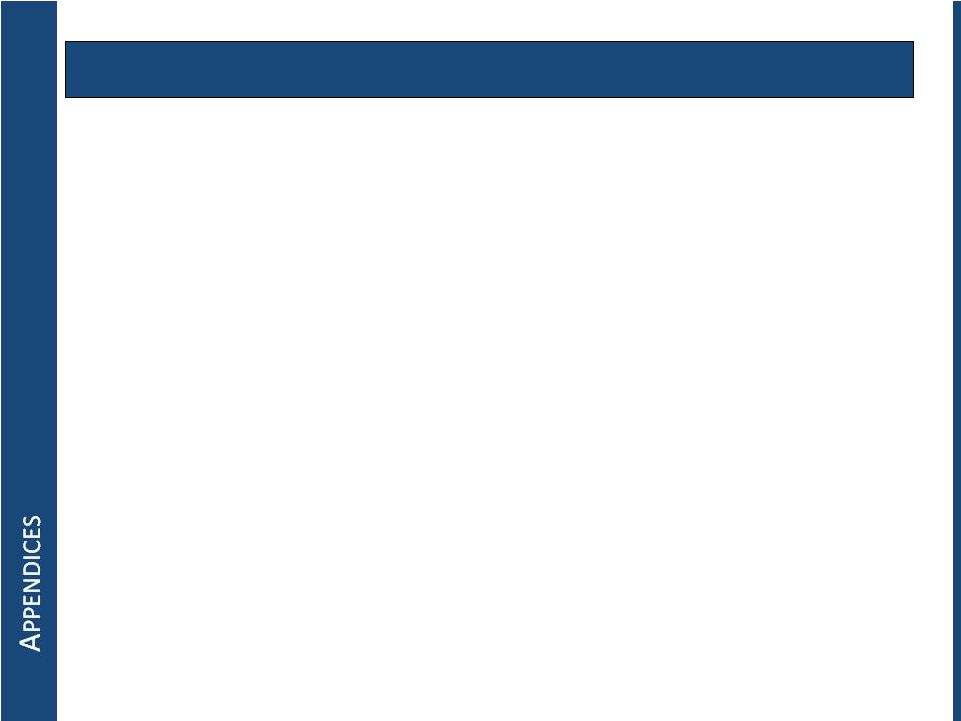 Non-GAAP
Measure: Disclaimer This presentation contains non-GAAP financial measures as
defined by SEC rules. We think that these measures are helpful to investors in
measuring our financial performance and comparing our performance to our peers.
However, our non-GAAP financial measures may not be comparable to similarly titled
non-GAAP financial measures used by other companies. These non-GAAP financial
measures have limitations as an analytical tool and should not be considered in
isolation or as a substitute for U.S. GAAP financial measures. To the extent we
discuss any non-GAAP financial measures on the earnings call, a reconciliation of each
measure to the most directly comparable U.S. GAAP measure are available in the
appendices that
follow
and
are
filed
as
an
Exhibit
99
to
our
Current
Report
on
Form
8-K
furnished
to
the
SEC concurrent with the use of this presentation.
17 |
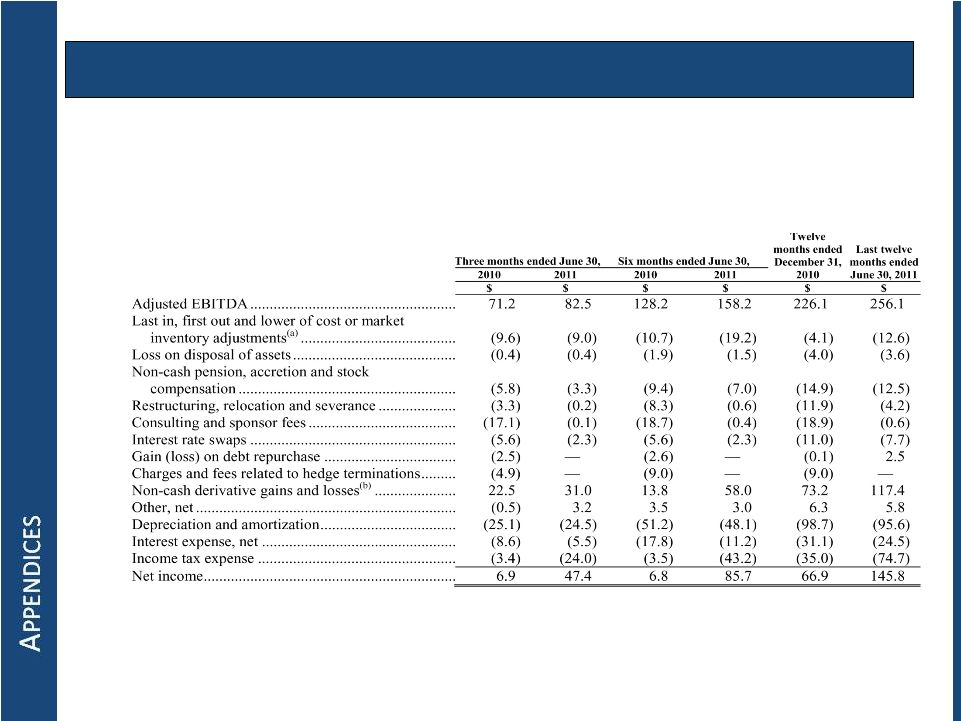 Non-GAAP
Measure: Adjusted EBITDA Management uses “Adjusted
EBITDA” as a liquidity measure in respect of the fixed-charge coverage ratio and the net senior
secured leverage ratio, as defined in our debt agreements. As used
herein, Adjusted EBITDA means net income before income taxes,
net interest expense and depreciation and amortization, adjusted to
eliminate certain non-cash expenses, restructuring charges, related
party management fees, charges resulting from purchase accounting and
other specified items of income or expense as outlined below (in
millions): 18 |
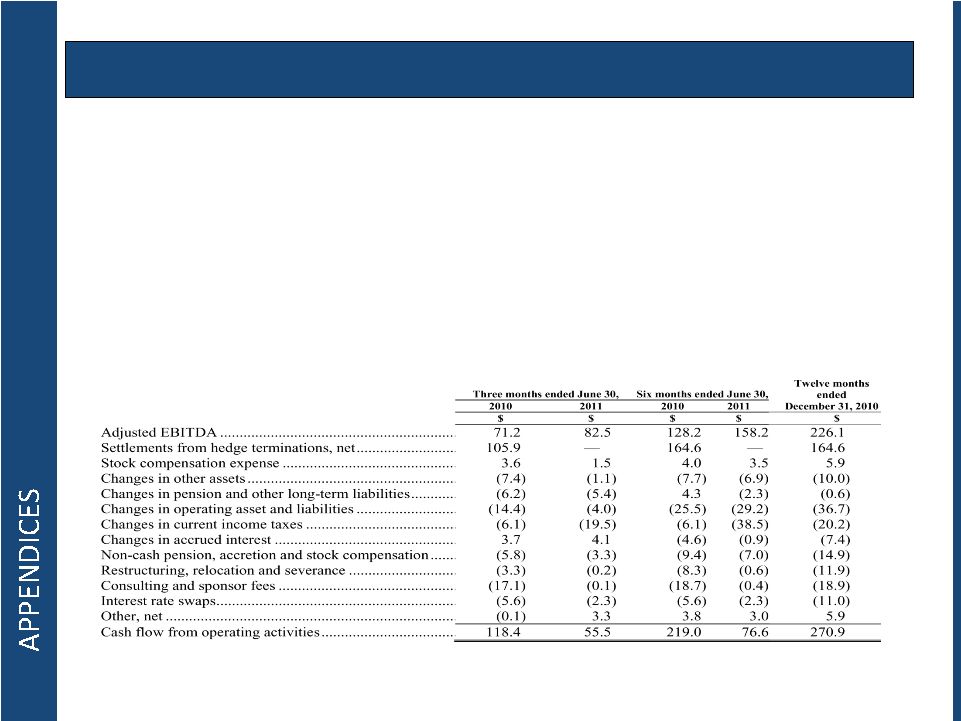 Non-GAAP
Measure: Adjusted EBITDA (Cont’d) Adjusted EBITDA is not a
measure of financial performance under U.S. GAAP, and may not be comparable to similarly titled
measures used by other companies in our industry. Adjusted EBITDA
should not be considered in isolation from or as an alternative to
net income, income from continuing operations, operating income or any
other performance measures derived in accordance with U.S. GAAP.
Adjusted EBITDA has limitations as an analytical tool and you should not consider it in isolation or as a substitute for analysis
of our results as reported under U.S. GAAP. For example, Adjusted
EBITDA excludes certain tax payments that may represent a
reduction in cash available to us; does not reflect any cash
requirements for the assets being depreciated and amortized that may have to
be replaced in the future; does not reflect capital cash expenditures,
future requirements for capital expenditures or contractual
commitments; does not reflect changes in, or cash requirements for, our
working capital needs; and does not reflect the interest expense,
or the cash requirements necessary to service interest or principal
payments, on our indebtedness. Adjusted EBITDA also includes
incremental stand-alone costs and adds back non-cash hedging
gains and losses, and certain other non-cash charges that are deducted in
calculating net income. However, these are expenses that may recur,
vary greatly and are difficult to predict. In addition, certain of
these expenses can represent the reduction of cash that could be used
for other corporate purposes. You should not consider our
Adjusted EBITDA as an alternative to operating income or net income,
determined in accordance with U.S. GAAP, as an indicator of our
operating performance, or as an alternative to cash flows from operating activities, determined in accordance with U.S. GAAP, as
an indicator of our cash flows or as a measure of liquidity.
The following table reconciles Adjusted EBITDA to cash flow from
operating activities for the periods presented (in millions): 19
|
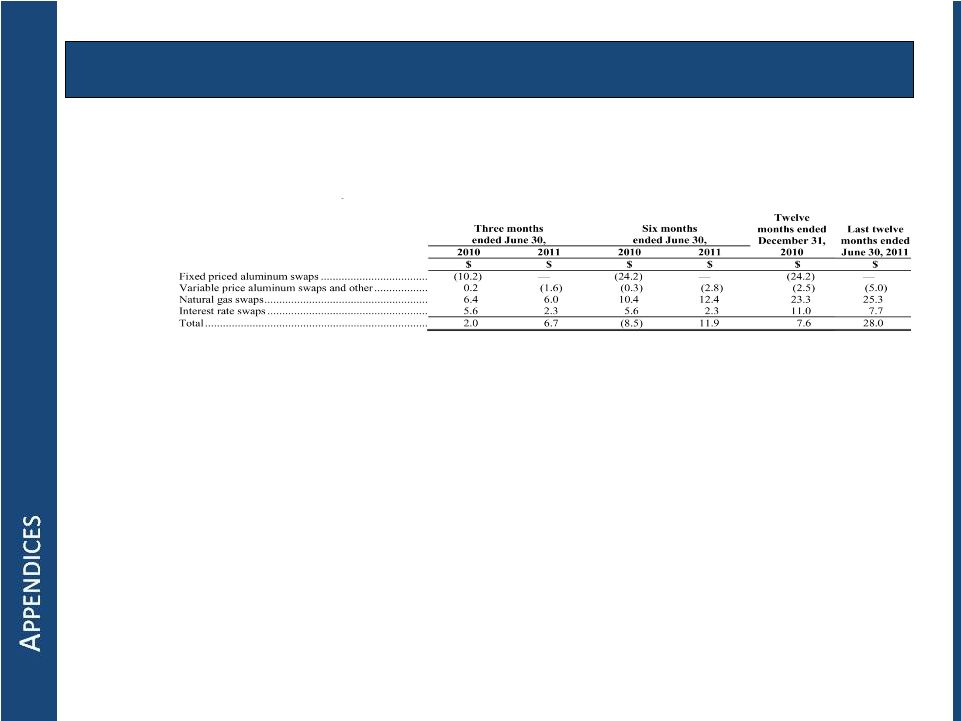 Our New Madrid smelter and our rolling mills use the LIFO method of
inventory accounting for financial reporting and tax purposes. This adjustment restates
net income to the FIFO method by eliminating LIFO expenses related to
inventories held at the New Madrid smelter and the rolling mills. Product
inventories at Gramercy and St. Ann and supplies inventories at New
Madrid are stated at lower of weighted-average cost or market, and are not subject to
the LIFO adjustment. We also reduce inventories to the lower of cost
(adjusted for purchase accounting) or market value. Non-GAAP Measure: Adjusted EBITDA
(Cont’d) (a)
(b)
We use derivative financial instruments to mitigate effects of
fluctuations in aluminum and natural gas prices. This adjustment eliminates the non-cash gains
The previous table presents fixed price aluminum swap cash settlement
amounts net of early termination discounts totaling $4.9 million in the three months
ended
June
30,
2010, $9.0
million
in the six months ended June 30, 2010 and $9.0 million in the twelve
months ended December 31, 2010. We settled all and losses
resulting from fair market value changes of aluminum swaps. Cash settlements (received) or paid, except settlements on hedge terminations, related to our
derivatives
are
included
in
Adjusted
EBITDA
and
are
shown
in
the
table
below:
fixed price aluminum swaps in connection with our IPO.
20 |
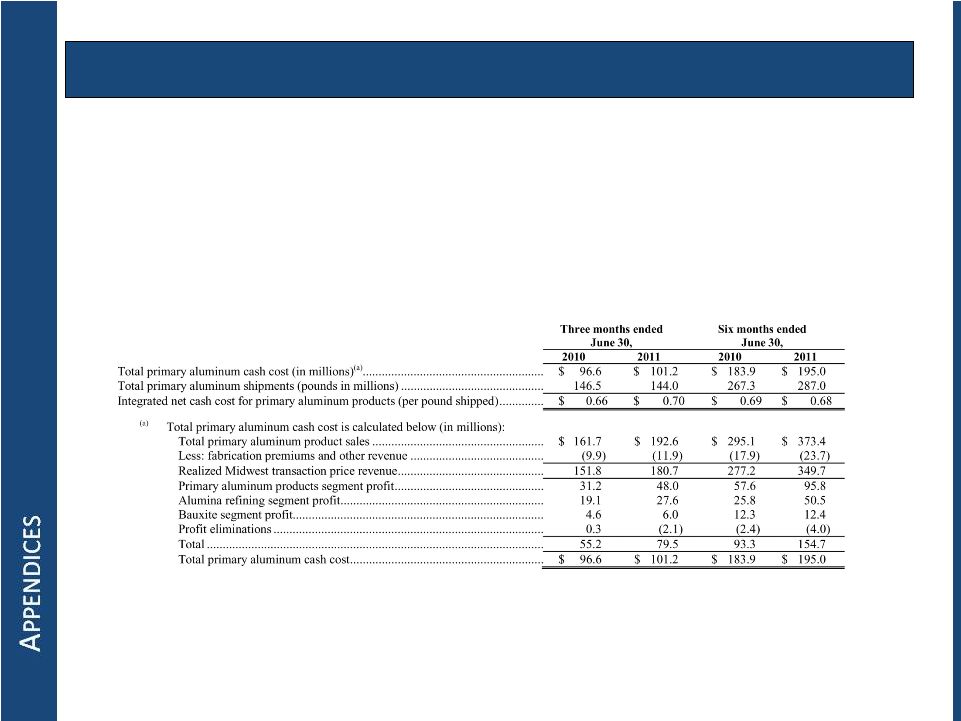 Non-GAAP
Measure: Net Cash Cost of Primary Aluminum
Unit net cash for primary aluminum per pound represents the costs of producing commodity grade aluminum net of
value-added premiums on primary aluminum sales. The Company has
provided unit net cash cost per pound of aluminum shipped
because it provides investors with additional information to measure
operating performance. Using this metric, investors are able to
assess the prevailing LME price plus Midwest premium per pound versus
unit net costs per pound shipped. Unit net cash cost per pound
is positively or negatively impacted by changes in primary aluminum, alumina and bauxite production and sales volumes,
natural gas and oil related costs, seasonality in electrical contract
rates, and increases or decrease in other production related costs.
Unit net cash costs is not a measure of financial performance under
U.S. GAAP and may not be comparable to similarly titled measures
used by other companies. Unit net cash costs per pound shipped should not be considered in isolation from or as an
alternative to any performance measures derived in accordance with U.S
GAAP. The following table shows the calculation of integrated
net cash cost of primary aluminum: 21 |
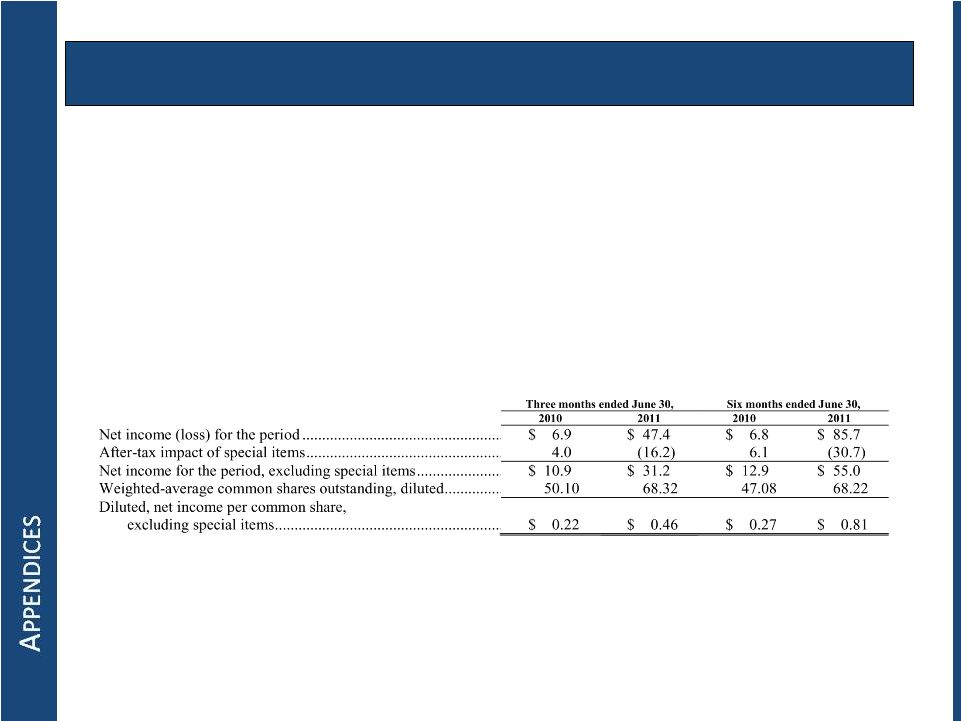 Non-GAAP
Measure: Diluted EPS, Excluding Special Items “Net income
(loss), excluding special items” means net income adjusted to eliminate the impact of certain transactions and
events referred to as “special items,” as listed herein.
“Diluted net income (loss) per share, excluding special items” refers to net
income (loss) excluding special items, divided by the number of diluted
weighted average shares outstanding. Management has provided net
income (loss), excluding special items and diluted net income (loss) per share, excluding special items because the
measure provides investors with additional information with which to
measure operating results. Using these metrics, investors are
able to assess the impact of certain transactions and events on
earnings and to compare net income (loss) from period to period with
the impact of those transactions and events removed from all periods.
Management believes this metric is a valuable tool in assisting
investors to compare financial results from period to period.
Net income (loss), excluding special items may not be comparable to
similarly titled measures used by other companies. Net income
(loss), excluding special items should not be considered in isolation
from or as an alternative to net income or any other performance
measures derived in accordance with U.S. GAAP. Net income (loss),
excluding special items has limitations as an analytical tool and
you should not consider it in isolation or as a substitute for analysis
of results as reported under U.S. GAAP.
22 |
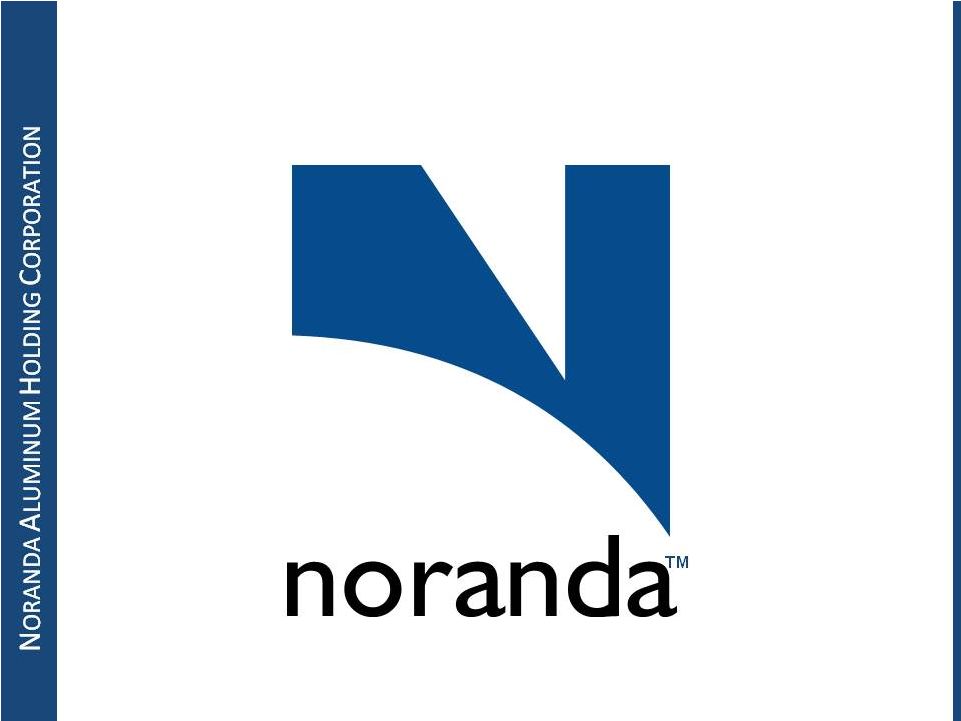 |
